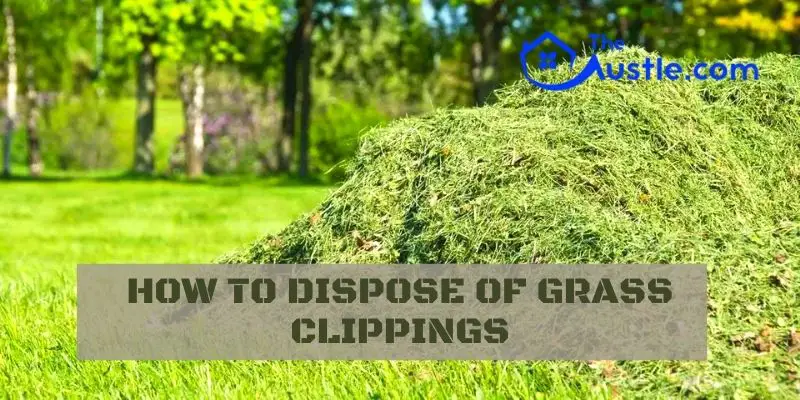With their vibrant flowers and hardy nature, oleanders are a popular ornamental shrub. However, oleander’s beauty belies a deadly secret – all parts of the plant contain toxic compounds that can be harmful if ingested. This makes disposing of oleander clippings after pruning a risky affair. Proper precautions are crucial when handling cuttings to avoid accidental poisoning.
Why Oleander Clippings Are Toxic
Oleanders contain cardiac glycosides such as oleandrin that can cause irregular heartbeat, dizziness, vomiting, and even death if eaten. The toxins are present in the leaves, stems, sap, flowers, roots, and seeds. Even smoke from burning clippings is dangerous if inhaled. Caution is required when dealing with any part of the plant.
Safety Gear for Handling Clippings
When pruning or handling oleander clippings, protect yourself with:
-
Long sleeves, pants, gloves to avoid skin contact with sap
-
Safety goggles to shield eyes from debris
-
Mask to prevent inhaling particles or dust
-
Closed-toe shoes for foot protection
Cutting Branches Cautiously
-
Use clean, sharp bypass pruners or loppers for clean cuts
-
Avoid shearing branches to prevent crushing leaves and stems
-
Cut branches longer to minimize sap dripping from cuts
-
Work slowly and carefully when pruning
Safe Disposal Methods
-
Never compost or mulch clippings due to toxicity
-
Do not burn branches as smoke can be hazardous
-
Avoid placing in yard waste bags for collection
-
Double-bag clippings in sealed plastic bags labeled “Oleander – Do Not Eat”
-
Dispose of sealed bags in regular household trash
-
Wash hands, clothes, tools thoroughly after handling
Dumping Clippings Responsibly
-
Do not discard clippings in any public areas
-
Never dump bags along roadsides or vacant lots
-
Find your community’s guidelines for disposing toxic plant waste
-
Consult local waste management about proper disposal options
##Monitoring Compost Piles
-
If composting, chop into tiny pieces and compost for 6+ months
-
Mix small amounts with abundant carbon-rich materials
-
Turn and monitor temperature to sustain 160°F+ heat
-
Test compost maturity before using in garden beds
Disposing of oleander clippings requires care to avoid serious poisoning accidents. With caution, proper gear, and responsible disposal, you can safely prune your oleanders and enjoy their beauty without putting others at risk. Handle clippings as toxic waste, and when in doubt, err on the side of safety.
How does this weed affect you?
Oleander is an occasional garden escape.
Oleander is highly toxic to humans and can cause serious illness and death if ingested. The plant’s whole body is poisonous, but the leaves and flowers are especially dangerous. They can make you vomit, have diarrhea, feel dizzy, have seizures, have an irregular heartbeat, and then have trouble breathing. Smoke from burning the plants is also toxic, and oleander is also a skin irritant. Poisonings from oleander are rare, as it has a foul taste.
What to do if poisoning occurs:
- If the person is unconscious, not responding, or having trouble breathing, call 911 or go to the emergency room of a hospital right away.
- Call the Poisons Information Centre at 13 11 26 or your doctor if the person is awake and can talk.
- As proof, bring a piece of the plant with you to the hospital.
Easy To Grow Oleander From Cuttings
FAQ
How do you dispose of oleander?
What can I do with oleander cuttings?
How to get rid of oleander safely?
Will oleander cuttings root in water?
How should oleander be disposed of?
Instead of discarding oleander branches or leaves, which contain highly toxic glycosides, you should compost them. To do this, place the chopped oleander on top of the dried organic matter, along with any other green waste you may have.
How do you remove Oleander from a tree?
Drill 4 holes and apply 4 to 6 ounces (124 to 186 gr.) of the stump remover product. It can take 6 weeks or more for the stump to begin to disintegrate. This method of getting rid of oleander plants is toxic, but when properly applied, it is targeted and should cause no harm to neighboring shrubs and plants.
How do you get rid of oleander plants without chemicals?
Getting rid of oleander plants without using chemicals takes dedication and perseverance. You will need to dig around and under the entire bush. Oftentimes, it is easier if you simply cut back all the limbs and stems so you can get a good grip on the stump and root system.
Can oleander be removed permanently?
Permanent removal of oleander often requires chemical intervention or professional gardening tools. Oleander bushes form extensive root systems after they have matured and become established. The oleander root system is tough and can grow amongst rocks and other obstacles, making them perfect foundation plants or specimens along the drive.
- A Complete Guide to Caring for Yuki Cherry Blossom Shrub - January 23, 2025
- Identifying Red Hot Poker Seeds: What to Look For When Harvesting Torch Lily Pods - January 23, 2025
- A Complete Guide to Harvesting Evening Primrose Seeds - January 23, 2025

